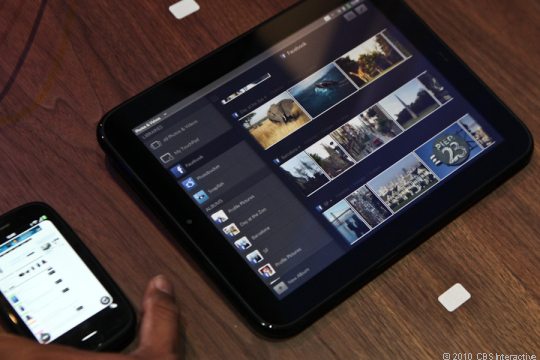HP's TouchPad lands July 1: Can it challenge Apple's iPad or claim No. 2 spot?

Hewlett-Packard said its Wi-Fi version of its TouchPad will be available in the U.S. July 1 and that latest challenger to Apple's iPad should be interesting to watch.
First, the details. HP's TouchPad will be available in the U.S. in a 16GB version for $499 and a 32GB version for $599. Those prices match Apple's iPad and the going rate for tablets. HP will start preorders in North America and Europe June 19.
Globally, the U.K., Canada, Ireland, France and Germany will get the device in mid-July. Italy, Spain, Australia, Hong Kong, New Zealand and Singapore will get the TouchPad later this year.
With its global bases covered, HP will have the latest in a long line of so-called iPad killers. In a statement, HP touted its WebOS as a key differentiator and alternative. Indeed, the WebOS is sharp, but HP will need the app ecosystems. Related: 
All things being equal though, HP's TouchPad could give the iPad some competition. Here's why.
- Previous efforts to unseat the iPad have flopped. A parade of Android devices have hit the market and largely disappointed. Samsung's 10-inch Galaxy Tab looks like the first suitable Android tablet. Research in Motion's PlayBook may become an enterprise play, but so far hasn't set retail channels ablaze.
- The inability of those tablet challengers to gain traction means that the door is wide open for the No. 2 slot in the tablet market. Why not the TouchPad? At some point a solid No. 2 will emerge.
- HP has a retail footprint. HP is hard to beat in the retail shelfspace department. Stores including Best Buy, Staples, Office Depot, Walmart, Sam’s Club, OfficeMax, Amazon.com, Fry’s and others will carry the TouchPad. That distribution is hard to match.
- WebOS is appealing. For techies, HP does bring a unique OS to the tablet market. If HP can do interesting interactions via WebOS to its printers and PCs, there could be some mojo there.
- HP has the enterprise heft to push the TouchPad to businesses.
- And finally, HP has the scale to lower the price bar on TouchPad should it gain traction initially.
That final point is the wild card. Many iPad rivals have flopped out of the gate early. HP's mission will be to get some early momentum, keep it going and push into its home enterprise turf.